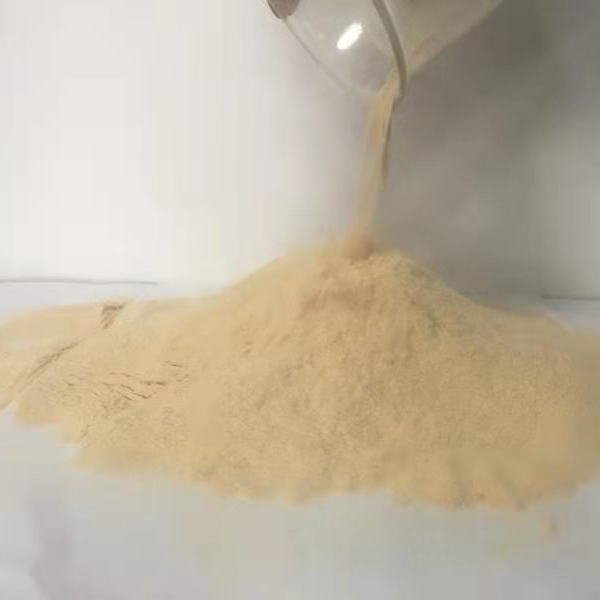
News
Dec . 10, 2024 20:40 Back to list
Calcium Salt Derived from Polyaspartic Acid for Enhanced Performance Applications
The Role of Polyaspartic Acid Calcium Salt in Modern Applications
Polyaspartic acid calcium salt has emerged as a versatile compound with promising applications across various fields, particularly in materials science, agriculture, and biomedical research. This innovative substance combines the properties of polyaspartic acid, a biodegradable polymer, with calcium, a vital mineral that plays numerous roles in biological systems. Understanding its characteristics and applications can shed light on its potential impact in diverse industries.
Composition and Properties
Polyaspartic acid is a naturally occurring amino acid polymer derived from aspartic acid. When combined with calcium, it forms a calcium salt that exhibits unique properties, such as excellent solubility, biocompatibility, and biodegradability. The structural formulation allows for the formation of stable complexes, enhancing its functionality in various applications.
The calcium salt of polyaspartic acid demonstrates high chelating properties, enabling it to effectively bind metal ions. This is particularly useful in agricultural practices, where it can enhance nutrient availability to plants. The chelation process allows for the formation of stable nutrient complexes that improve absorption efficiency, ultimately leading to better plant growth and yield.
Agricultural Applications
In agriculture, the use of polyaspartic acid calcium salt as a fertilizer additive is gaining traction. Its ability to improve nutrient solubility and uptake makes it an ideal candidate for enhancing soil health and plant growth. Farmers and agronomists are increasingly incorporating polyaspartic acid calcium salt into their nutrient management strategies to promote sustainable agriculture.
The biodegradable nature of polyaspartic acid calcium salt is another significant advantage. Unlike conventional fertilizers that can lead to soil degradation and water pollution, this compound contributes to soil enrichment without harmful side effects. Its application helps maintain soil structure and fertility, making it a valuable tool in the push for sustainable farming practices.
polyaspartic acid calcium salt

Biomedical Applications
Beyond agriculture, polyaspartic acid calcium salt has garnered attention in the biomedical field. Its biocompatibility makes it suitable for use in drug delivery systems and tissue engineering. Researchers are investigating its potential as a carrier for various therapeutic agents, utilizing its ability to form stable complexes with drugs, which can enhance efficacy and reduce side effects.
In tissue engineering, polyaspartic acid calcium salt supports cell growth and differentiation, making it a promising material for scaffolds. These scaffolds provide structural support for tissue regeneration while promoting cellular interactions. The incorporation of calcium in the polymer enhances its biological functionality, as calcium ions are crucial for various cellular processes, including signal transduction and cell adhesion.
Industrial Applications
The versatility of polyaspartic acid calcium salt extends to industrial applications as well. Its high adhesive properties make it an ideal candidate for coatings and sealants. Industries are exploring its use in producing environmentally friendly coatings that meet regulatory standards while providing durable protection for various surfaces.
Additionally, polyaspartic acid calcium salt is being investigated for its potential in wastewater treatment. Its chelating abilities can be employed to remove heavy metals and other contaminants from wastewater, contributing to cleaner and safer environments. The ability to form stable complexes with toxic metals enhances its effectiveness in purification processes.
Conclusion
In conclusion, polyaspartic acid calcium salt is a multifunctional compound with a wide array of applications spanning agriculture, biomedicine, and industrial processes. Its unique properties, including biodegradability, biocompatibility, and chelation capabilities, position it as a valuable resource in the pursuit of sustainable practices across various sectors. As research continues to unlock its potential, we can expect polyaspartic acid calcium salt to play an increasingly significant role in promoting environmental stewardship, enhancing plant productivity, and advancing biomedical innovations. Its versatility and efficacy make it a compound worthy of attention in the modern landscape of science and technology.
-
Polyaspartic Acid Salts in Agricultural Fertilizers: A Sustainable Solution
NewsJul.21,2025
-
OEM Chelating Agent Preservative Supplier & Manufacturer High-Quality Customized Solutions
NewsJul.08,2025
-
OEM Potassium Chelating Agent Manufacturer - Custom Potassium Oxalate & Citrate Solutions
NewsJul.08,2025
-
OEM Pentasodium DTPA Chelating Agent Supplier & Manufacturer High Purity & Cost-Effective Solutions
NewsJul.08,2025
-
High-Efficiency Chelated Trace Elements Fertilizer Bulk Supplier & Manufacturer Quotes
NewsJul.07,2025
-
High Quality K Formation for a Chelating Agent – Reliable Manufacturer & Supplier
NewsJul.07,2025
